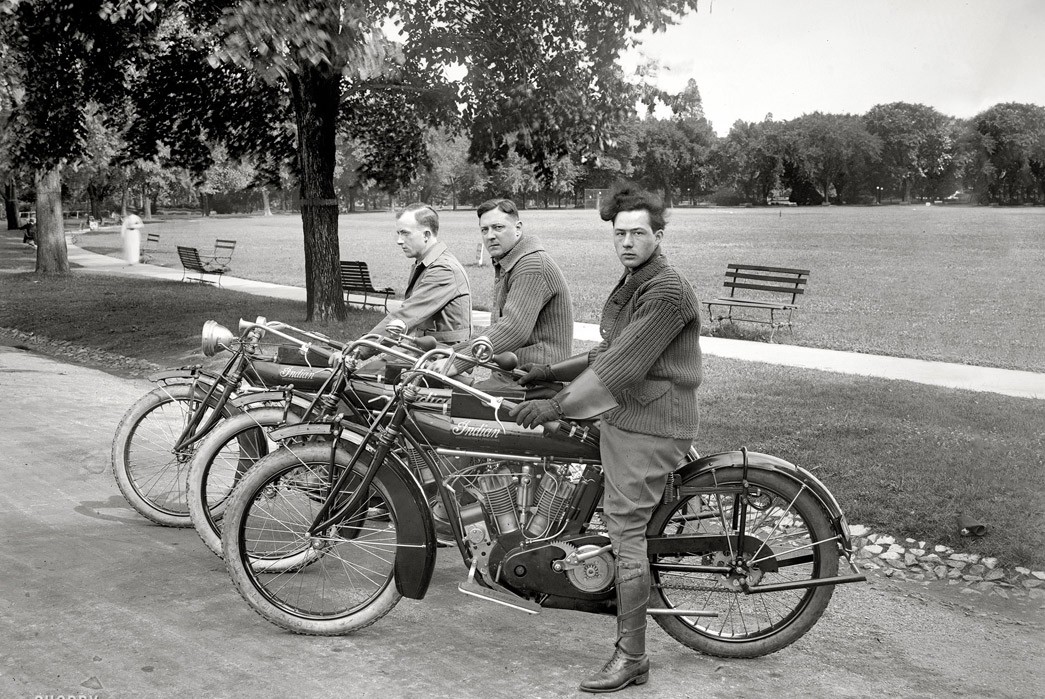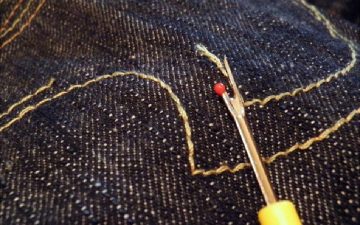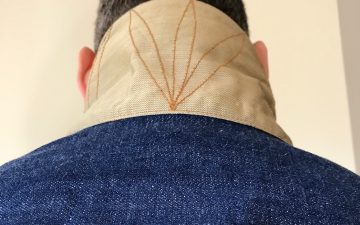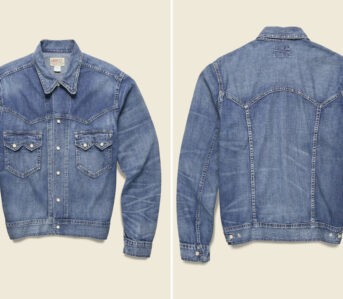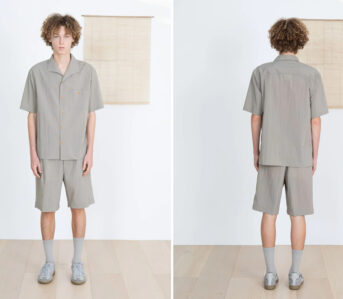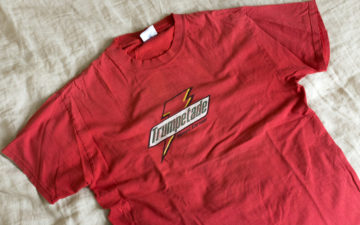You return from France in the Spring of 1919. A year was spent in the Army on a foreign continent, eating every tinned meal from an aluminum tray and being trapped in the monotony of mundane military tasks. You’ve become restless. Even after the shells stopped raining down, a flu pandemic carried on killing those who were close enough to have breathed on each other. It kills by the score and it doesn’t seem to care who is unlucky enough, only that they’re young and full of promise. There was something in the eyes of those left living; the Americans, British, French, and even the Germans and Austrians; removedness. Your same restlessness.
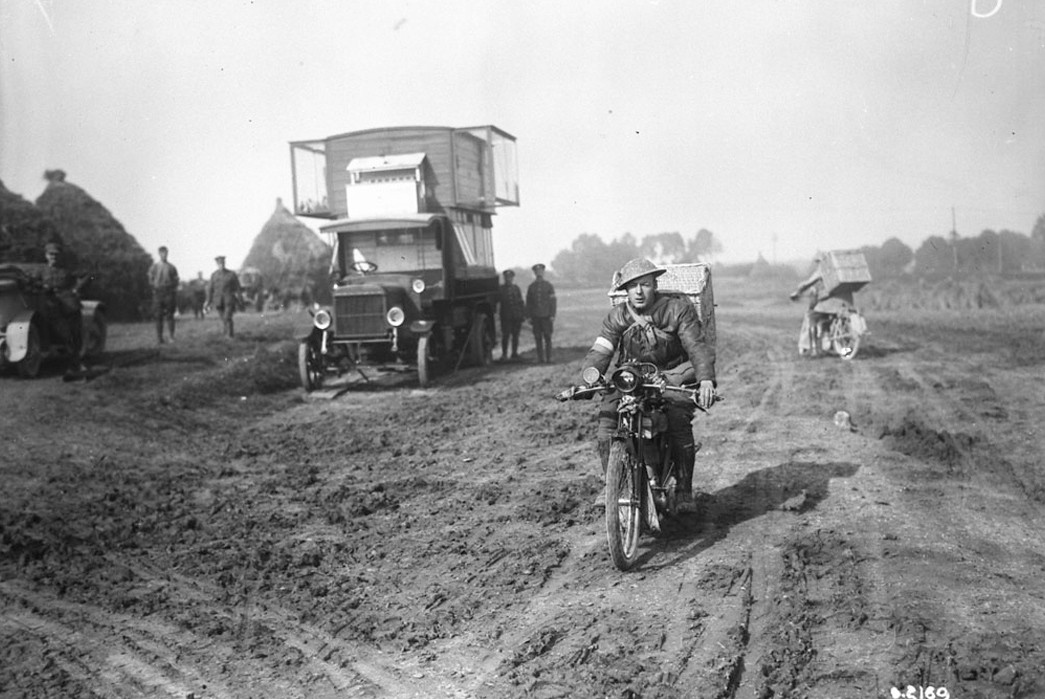
A British dispatch (or despatch) rider leaving for the front in November 1917. He carries messenger pigeons on his back. Image via the Motorcycle Confederation of Canada.
However, in the final months of the war when the attrition of trench warfare was broken, you observed something else; mechanization on a grand scale. Tanks, airplanes, and artillery tractors. Model T ambulances brought your wounded comrades from the front and even the enemy prisoners remarked meekly what a fine vehicle it was. You would know because you passed many ambulances in your service as a motorcycle dispatch rider. The dispatch case with battlefield orders that you carried bound you to Army life, but the motorcycle would set you free.
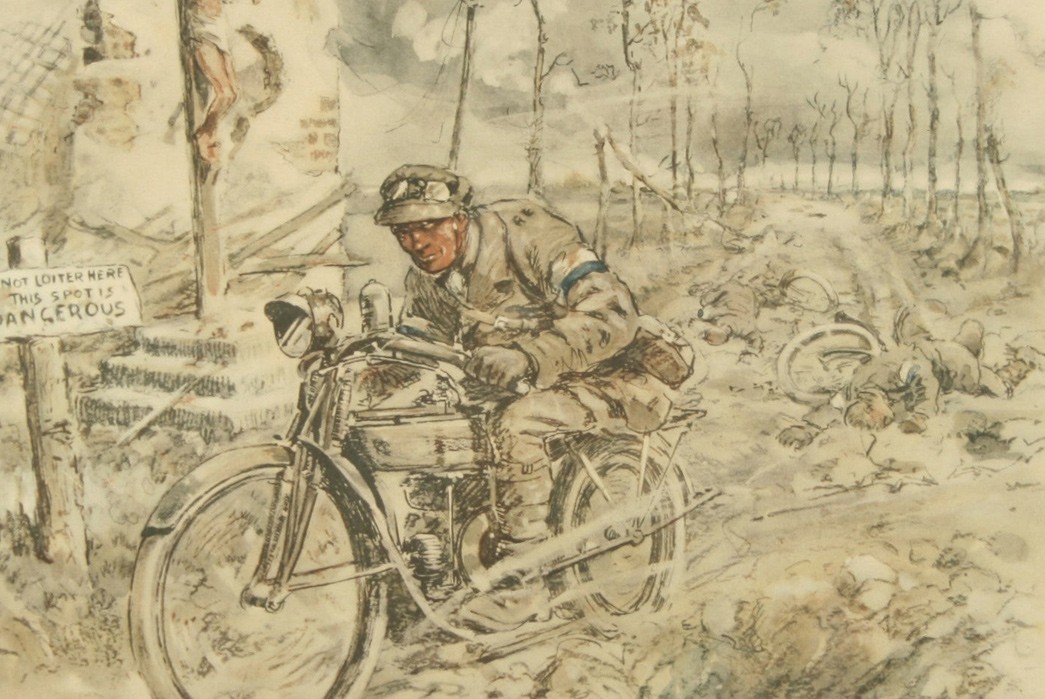
English illustrator Charles “Snaffles” Johnson Payne illustrated this dispatch rider traversing the front lines. He appears to be riding a Douglas bike which was common among British forces. Note the riders in the background who were presumably killed by enemy fire. Image via 1stDibs.com.
Stateside, the bike industry is booming. A few weeks in the backcountry with a motorcycle and a surplus “pup” tent will do you well with unwinding and forgetting the quagmire that consumed an entire generation. You — along with the entire American public — are entering a golden age of “motor camping.” Speed and efficiency have joint kingship, and the national interest will soon shape the cross-continent road system. Motorcycles, with their adventurous appeal and adaptability, are at the forefront of affordable transportation.
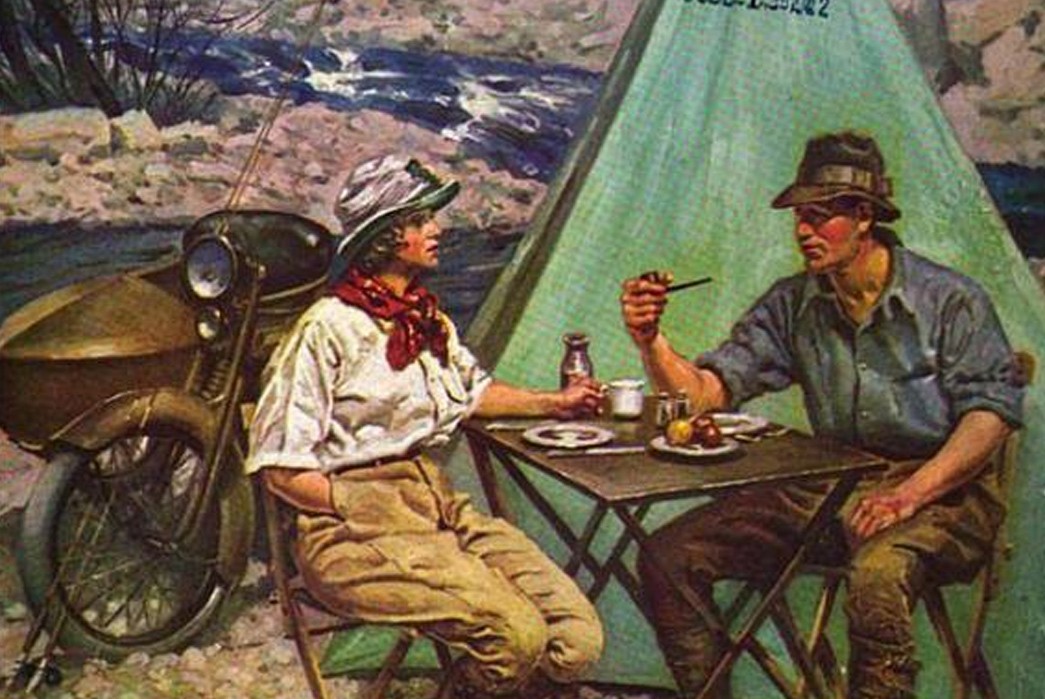
Motor camping in 1922. Sidecars are a great addition to any bike needing an extra seat and storage. Image via Stumpjack Outdoors/Facebook.
Counter Culture
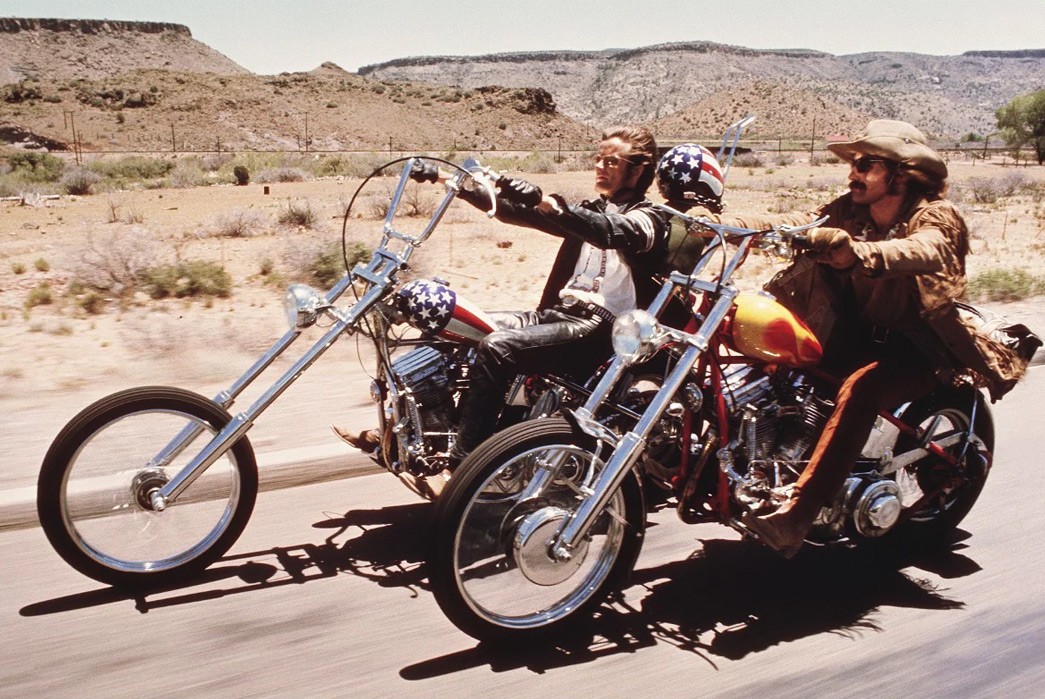
The star-studded cast of Easy Rider (1969), featuring a soundtrack that’s equally as famous, characterizes biker culture even 50 years later. The plot follows two bikers as they travel across the country to peddle narcotics. As the aging fanbase rides into the sunset, how will the image of motorcycling change in the near future? Image via Columbia Pictures/Turner Classic Movies.
Think of the word “motorcyclist” today and you’re likely to conjure images of bikers in your mind. Rough-cut, brawny, fringed leather chaps, white tees, questionable tattoos, and perhaps handlebar mustaches or goatees. The famous clubs —with painted “leathers” that strike fear into rivals and display accolades earned in highway warfare — have their place in American lore like the outlaw gangs of the Wild West.
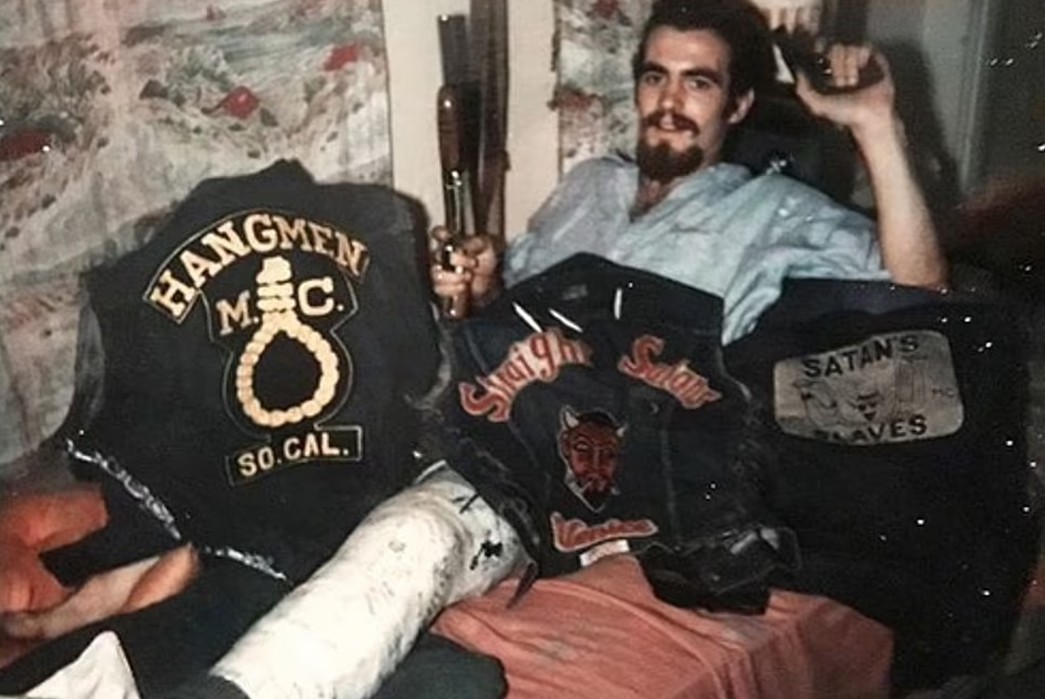
“Norm,” a member of the Straight Satans motorcycle club (MC), poses with some prized leathers at the clubhouse in 1967. He appears to be armed with some standard tools of the outlaw trade; a snub nose Colt Detective Special revolver and a sawed-off Remington Model 870 shotgun. Image via Daily Mail.
Their image has created a lifestyle brand that encompasses many layers of society; from asphalt cowboys who rip the throttle of a $30k bike at crowded red lights to guys more comfortable brawling in a casino than feeding pennies into a slot machine. How did this violent change, so widely seen, occur after World War II?
Narcotics.
The Counter Culture opened the floodgates to illicit narcotics and some clubs were opportunistic. Despite the wide appeal of motorcycling, the subculture worked itself into a dark corner that has sent the industry’s old hands reeling and opened many file drawers at the FBI. Clubs that have never touched the stuff can sometimes give off a “gangland” aesthetic.
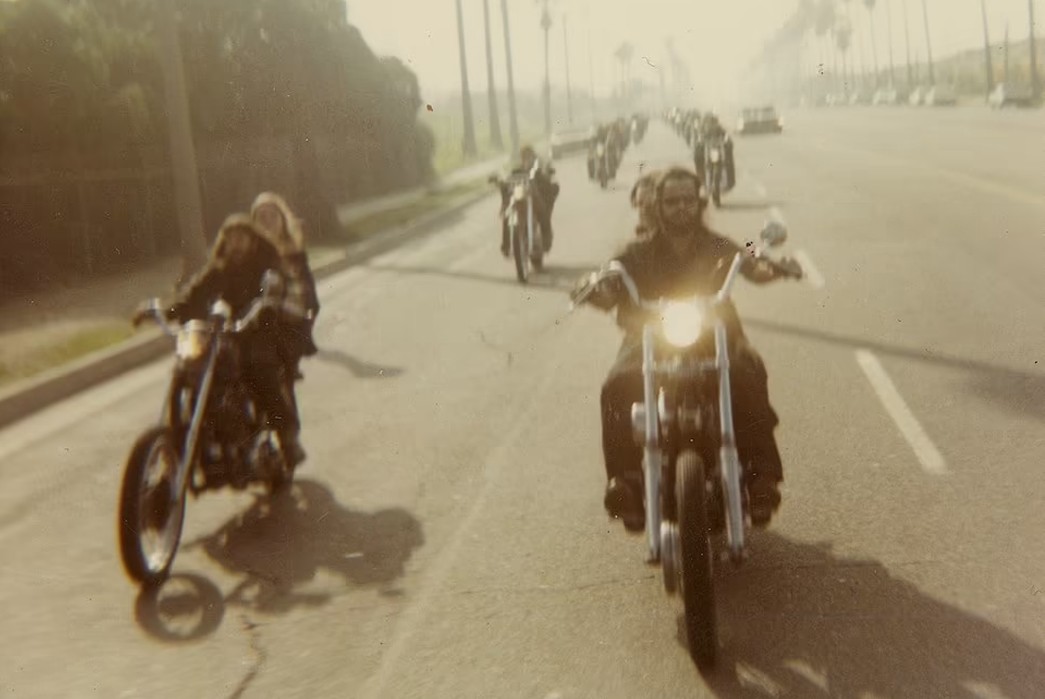
The Straight Satans club taking a ride down Washington Boulevard in Venice, California in 1970. Image via Daily Mail.
Even with the best engineers and designers for a brand, the customer’s choice of wheels is a stylistic one at the end of the day. For better or worse in the Western world, what you wear reflects what you drive. The declining sales of traditional brands are (perhaps unfairly) the result of image, and an inability to steer it back in a popular direction.
Just as workwear enthusiasts turn their attention from the postwar era to earlier in the century, aesthetics can be gleaned from when motorcycling was at the forefront of innovative travel.
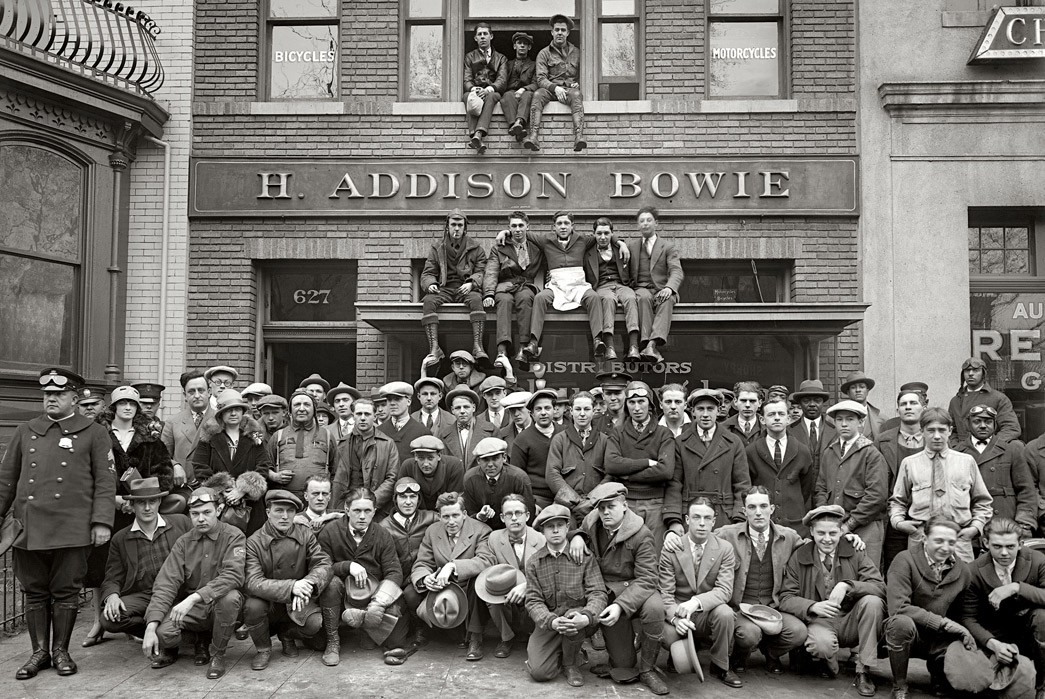
Dressing sharp for the Jazz Age. Motorcycle dealer H. Addison Bowie in Washington D.C., 1925. Image via Shorpy.com.
The New Century
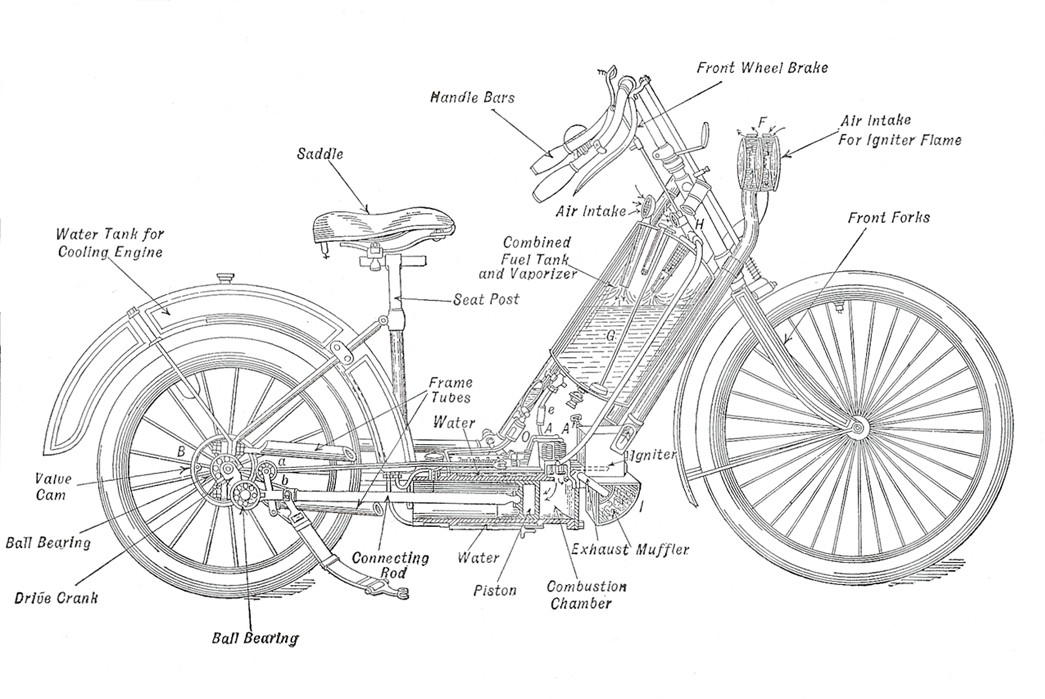
A schematic of the 1894 Hildebrand & Wolfmüller. Image via Wikipedia.
Motorcycle culture prior to World War II was markedly different than the 1960s-to-present era. As the year 1900 loomed, automobiles were seen as playthings for the urban rich. Between cities, roads were an unpaved joke where the punchline was delivered each muddy Spring. Another two-wheeled invention began to take hold and, coincidentally, it was the bicycling clubs that initially led the charge to improve overland travel. Without question, preexisting bicycle design and manufacturing played a key role in creating their mechanical counterparts.
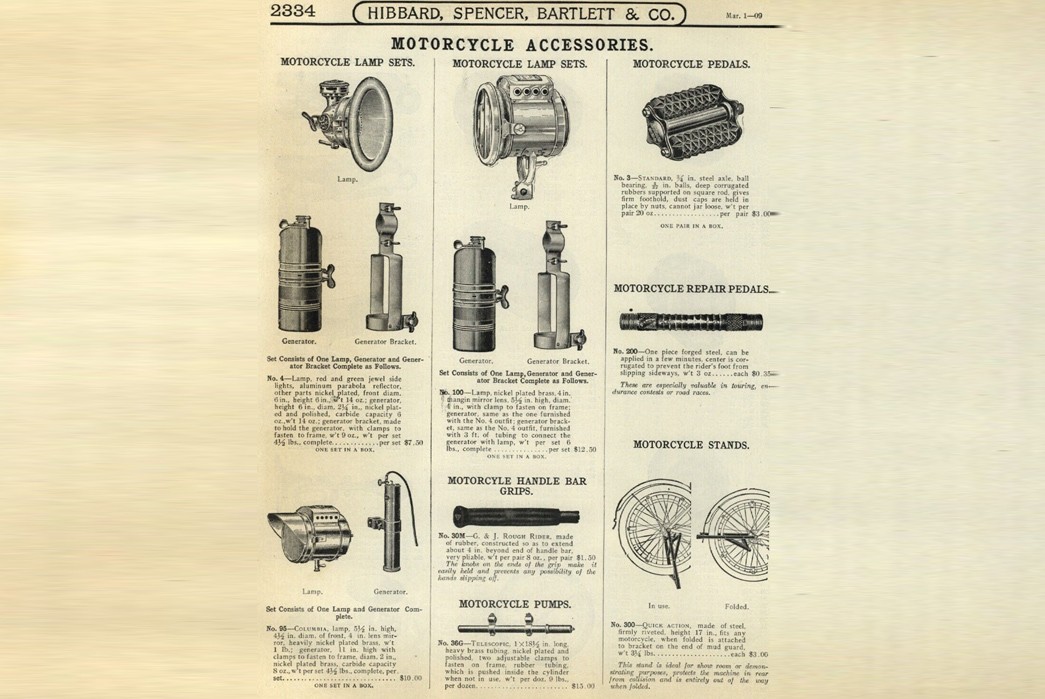
Not “headlight,” but “headlamp.” Early motorcycles could be fitted with cylindrical acetylene “generators” which produced volatile acetylene gas to burn in the lamp making nighttime travel a possibility. This catalog is from 1905. Image via gdawg/eBay.
Moving between points on a map without the need for a horse was revolutionary, especially in the context of everyday people going about their business. Large cities already faced livability issues with throngs of animals traversing the streets daily. Machinists and salesmen soon seized the reigns.
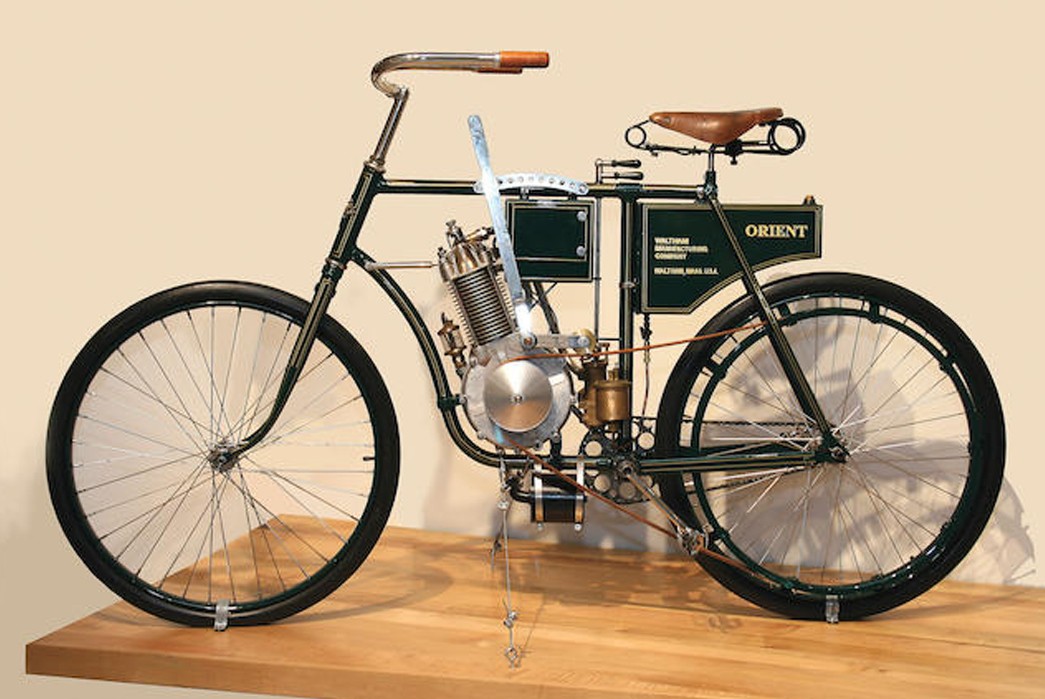
Dated 1900, this Orient Light Roadster is a newer iteration of the original Orient-Aster. Image via Bonhams.
The concept of a powered, horseless two-wheel vehicle had already been prototyped in the mid-19th century. Like with the automobile, mass production is what gave resilience and accessibility to the idea. Europe made early strides with production motorbikes including the first mass-produced brand, from Germany, Hildebrand & Wolfmüller (1894). That same year also saw the first instance of the English word “motor cycle.” Great Britain followed with their own line of motorcycles from Excelsior Motor Company (1896), while the United States threw its hat in the ring two years later with Orient-Aster.
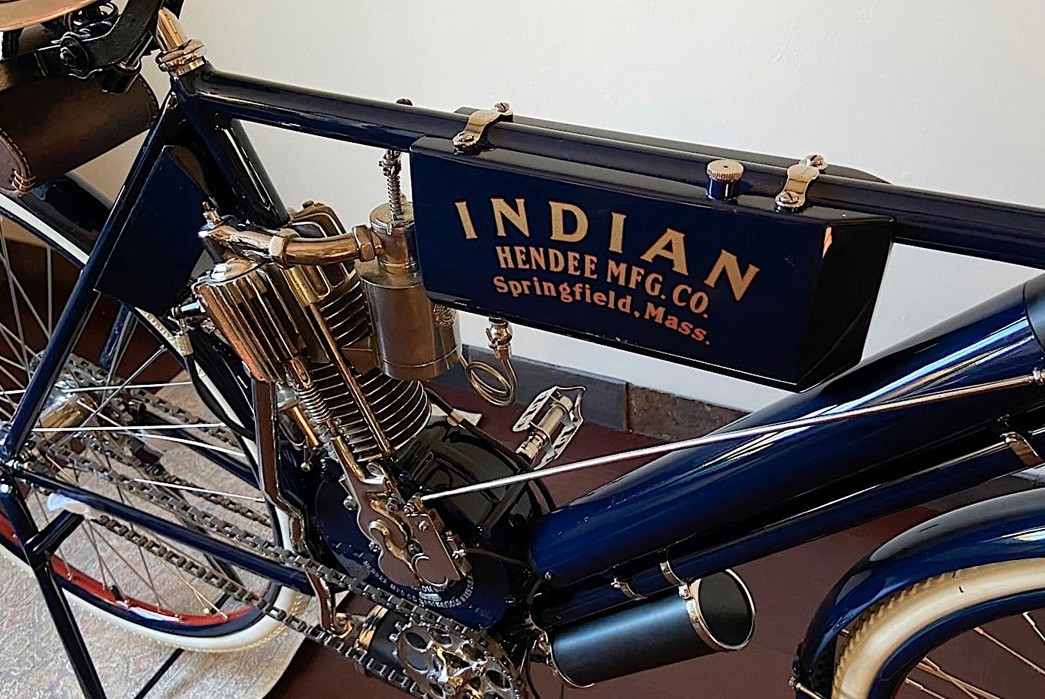
A 1903 Indian clearly marked with Hendee’s name. The mechanical and aesthetical similarities to a bicycle are striking–there are even pedals to help get the bike moving before switching to the engine. Image via AutoEvolution.
The titans of the industry–who would become household names the world over–emerged shortly after motorists got a thirst for speed. Hendee Manufacturing Company began producing Indian motorcycles out of Massachusetts in 1901, or about four years after they were established to make bicycles. The early success of the motorbike meant that the Indian Motorcycle Company would be formed in 1923, changing the name of George Hendee’s original enterprise.
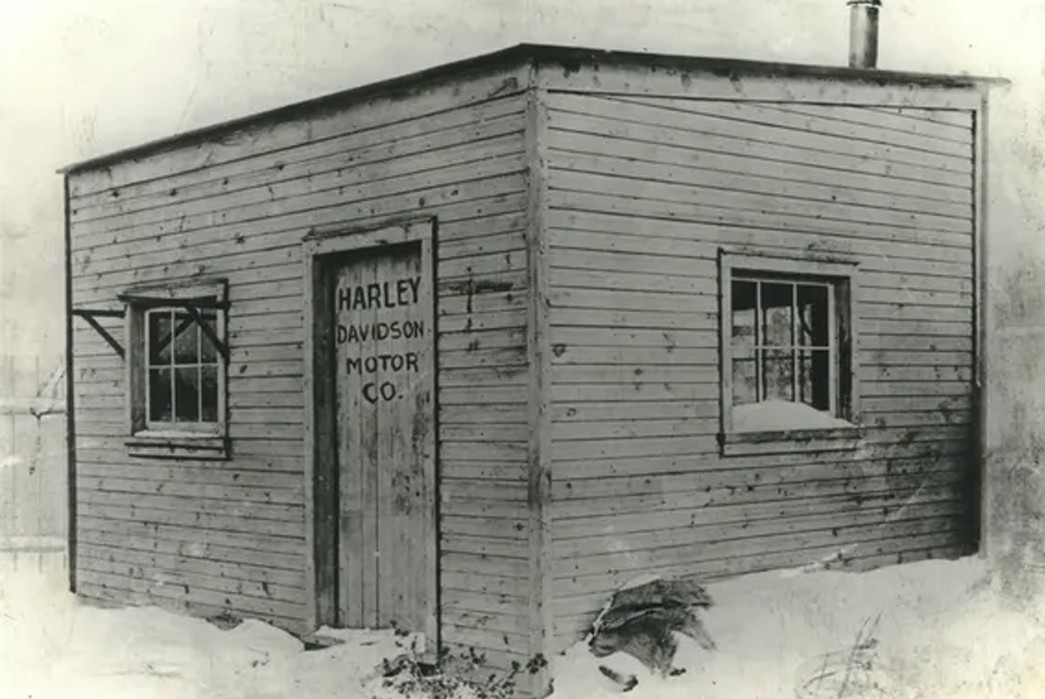
Harley-Davidson had homespun beginnings. This 150-square-foot (14-square-meter) shop was where their first ground-up motorcycle was produced. Image via Milwaukee Sentinel Journal.
As Hendee rolled out its first motorcycle, the perennial Harley-Davidson took its first steps in a Wisconsin shade-tree machine shop. William Harley and Arthur Davidson, both in their early twenties at the time, leveraged their contacts to piece together a prototype and establish their enterprise in 1903. The Great War (alternatively dubbed World War I, 1914-1918) was a gamble that Indian ultimately took a loss on–their government production contract, while bigger than Harley-Davidson’s, stretched their commercial supply chain to the breaking point. However, over the following decade, motorcycle makers across the country enjoyed an age of automotive bonanza.
Fast forward to after The Great Depression (1929 to 1939); Harley-Davidson and Indian are the only American motorcycle corporations to survive. By comparison, Britain had over 80 competing manufacturers in the same period. The two American juggernauts battled like Coke and Pepsi until Indian folded in 1953. Various companies have since attempted to revive the brand.
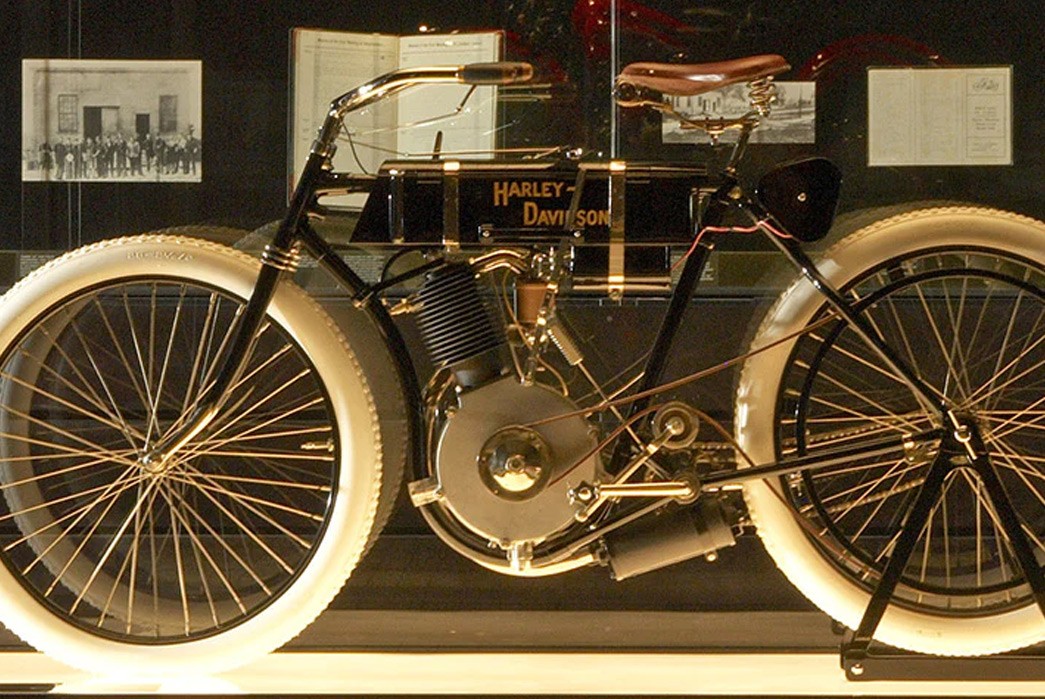
The oldest surviving Harley known to exist is a 1903 Model 1. Off-white tires on early autos were due to the color of natural rubber harvested from trees. Carbon black–which produces tires of a more familiar shade–was first added by Michelin around 1917 to increase durability. Image via Mama Tried Show/Harley-Davdison, Juneau Avenue Factory.
Dressing for Speed
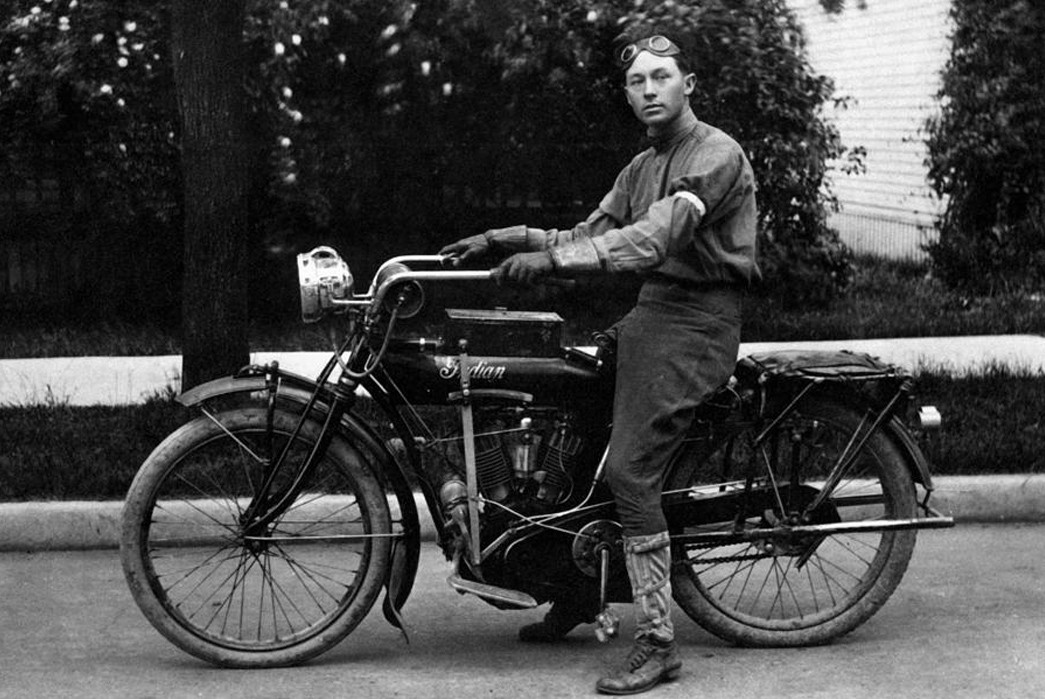
This 1910s-era image depicts a motorcyclist sporting goggles of the leather mask type, gauntlet gloves, and canvas leggings (which are an alternative to puttees). The sleeve garter is a nice detail; these were commonly used to hold the sleeves up to prevent the cuffs from being soiled, such as when working on your Indian bike. Image via Fine Art America.
The pioneers of early motoring shared stylistic similarities with their aviation counterparts. This comparison is especially fitting; both groups were held in high esteem for pushing the technological bounds of human travel. Once indicative of both pilots and motorcyclists, leather skull caps and goggles have since fallen out of favor with the adoption of closed cockpits (on airplanes) and crash helmets with integral lenses (on bikes).
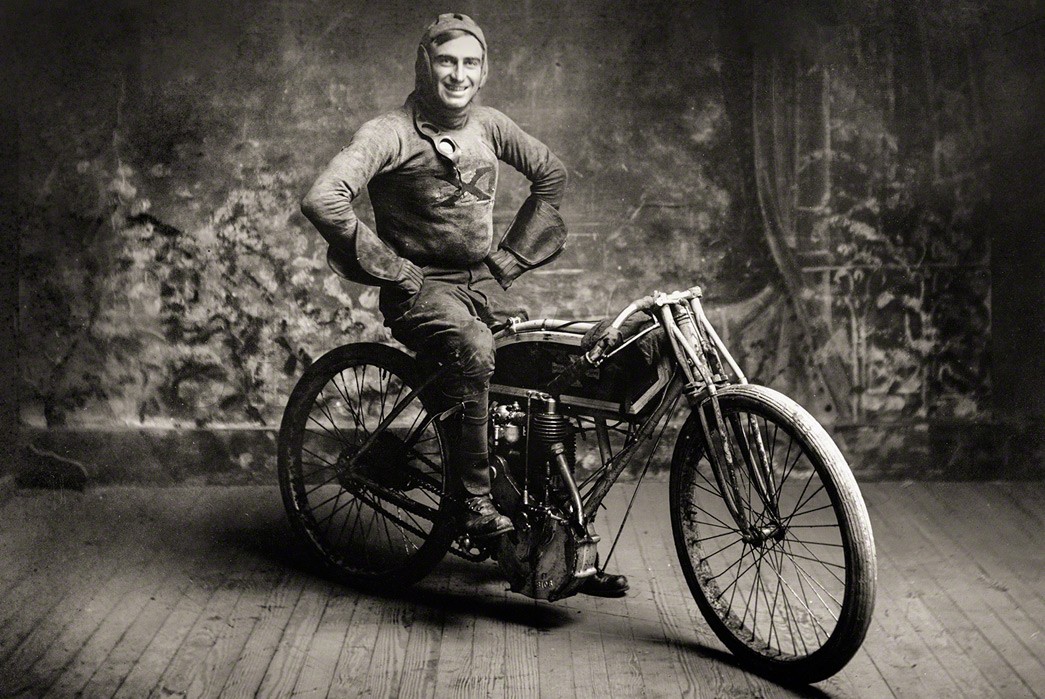
Ray Weishaar, 24 years old at the time, won a 100-mile race in Kansas shortly before this 1914 image was struck and set a new world speed record. He was part of Harley-Davidson’s “Wrecking Crew” race team. Image via Shorpy.com.
A 1916 article in the journal Flight summarized,
“Although it has been demonstrated on several occasions that the wearing of a safety helmet has saved the wearer from serious injury, there are still many who prefer to keep their heads more or less unencumbered. In this case the tight-fitting leather “skull-cap” [sic.] as used by motorists is very popular, and is certainly better than the ordinary cloth cap…With the cap is a leather mask having a special form of goggles giving a wide field of vision.”
As for the iconic look of tinted sunglasses? In 1928, Harley-Davidson began selling them in their catalogs as “Outinglas.”
Wool to Keep You Warm
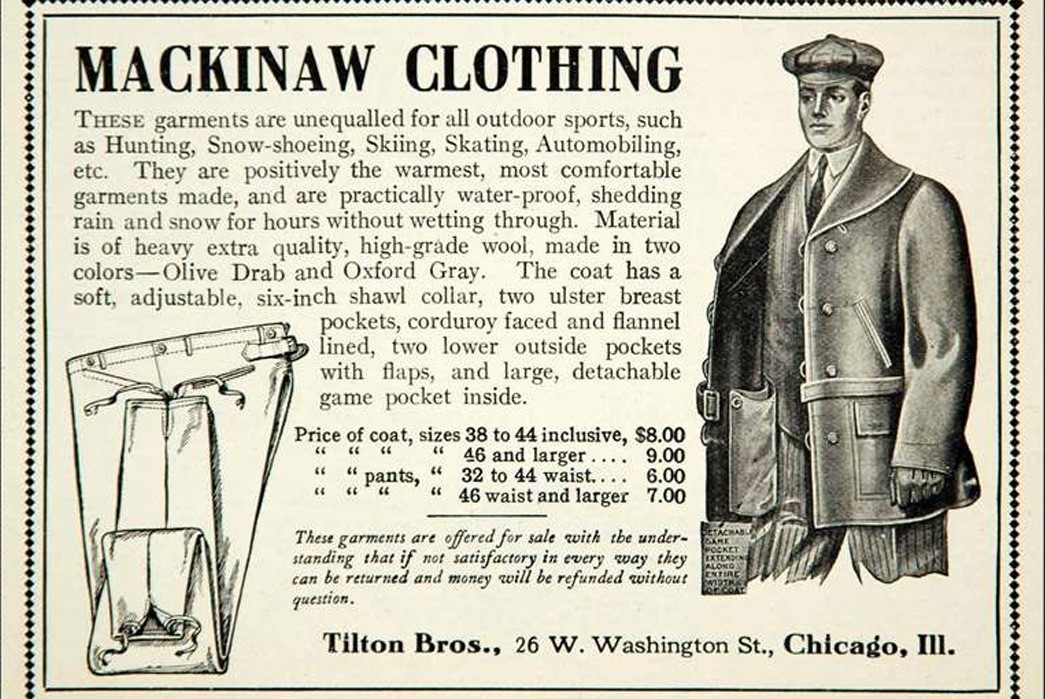
An advertisement from 1912 appeals to “all outdoor sports” including “automobiling.” Image via world war I nerd/U.S. Militaria Forum.
In the 1910s and ’20s, mackinaws, Norfolk jackets, and other belted, felted, and knit variations, were popular among many from sportsmen to gearheads. Having the freedom of movement that a shorter coat provides is important for active wear. Shawl collars became all the rage during this period as well. The Patrick Duluth Woolen Mills were to thank for that–they reimagined the mackinaw for a new crowd in 1912. Appealing to young adults proved to be a solid marketing strategy as the “Nansen” (shawl) collar spread to other designers.
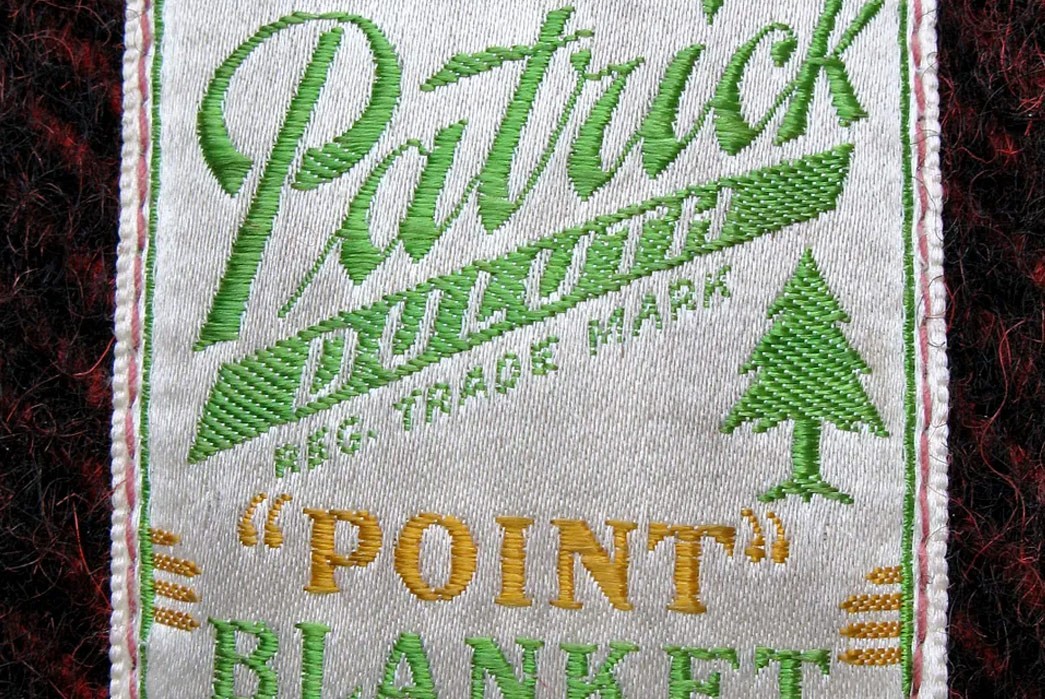
This tag is from an original “Patrick” mackinaw. To learn more about “point” blankets, please see the previous long-form article. Image via Dinerman/The Fedora Lounge.
Motorcycle Fashion Goes to War
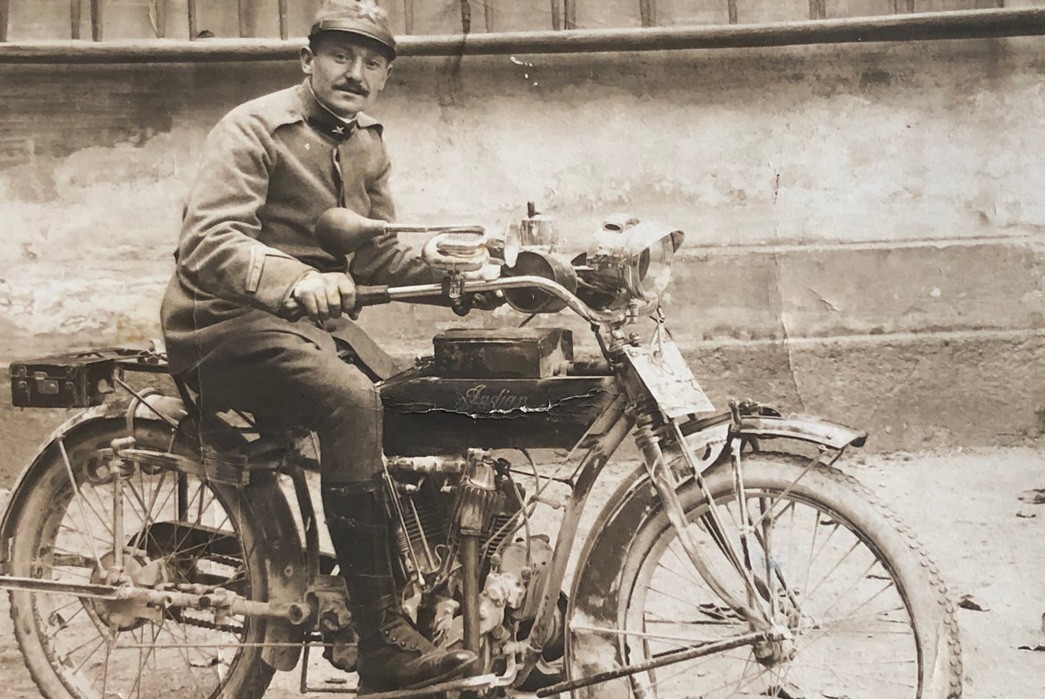
An officer of the Royal Italian Army poses on a kitted-out Indian motorcycle around the time of The Great War. Image via IXPortaAntiques/Etsy.
During The Great War, motorcycles became invaluable for reconnaissance, evacuating casualties, delivering dispatches, and a variety of other roles. The potential of motorized transport became fully realized in the wake of carnage and destruction. While outdated in its battlefield tactics until the final months of the war, the U.S. Army was keener on contemporary fashion having adopted its own version of the mackinaw in 1907. By 1917, the military’s specifications stated that,
“Mackinaw coats or a similar garment, will be issued to drivers of motor trucks, motor cars, motor ambulances, and motorcycles, in lieu of the olive drab overcoat.“
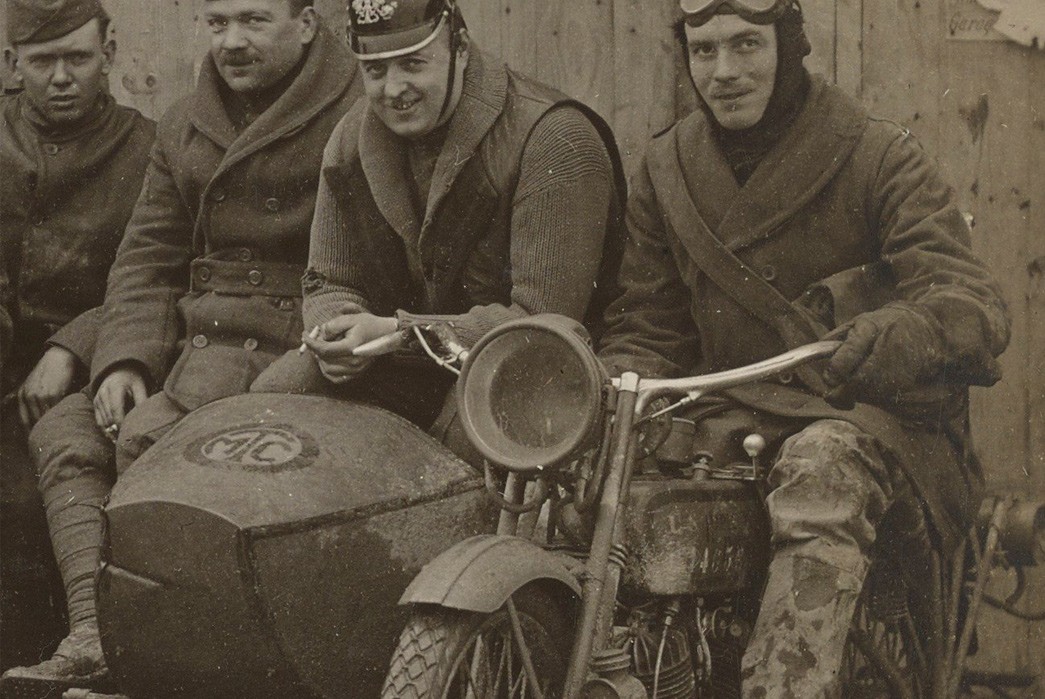
American soldiers, likely in France, circa 1918. This photo is a great survey of military motoring wear from the period. At the far left is a sleeveless leather jerkin. There’s an example of a knit cardigan with a shawl collar, second from right, worn under a jerkin. The remaining two men are wearing classic wool mackinaws. Image via Steve Murphy/Facebook.
America had spooled up production for a long war. A year and a half after its entry, the end was drawing near and warehouses full of military uniforms and equipment sat untapped. The surplus market was about to boom. Catalogs filled with everything from coats to tents to utensils appeased the public’s appetite for inexpensive military goods. A muted rainbow of olive-khaki-brown was in vogue.
Leather is King
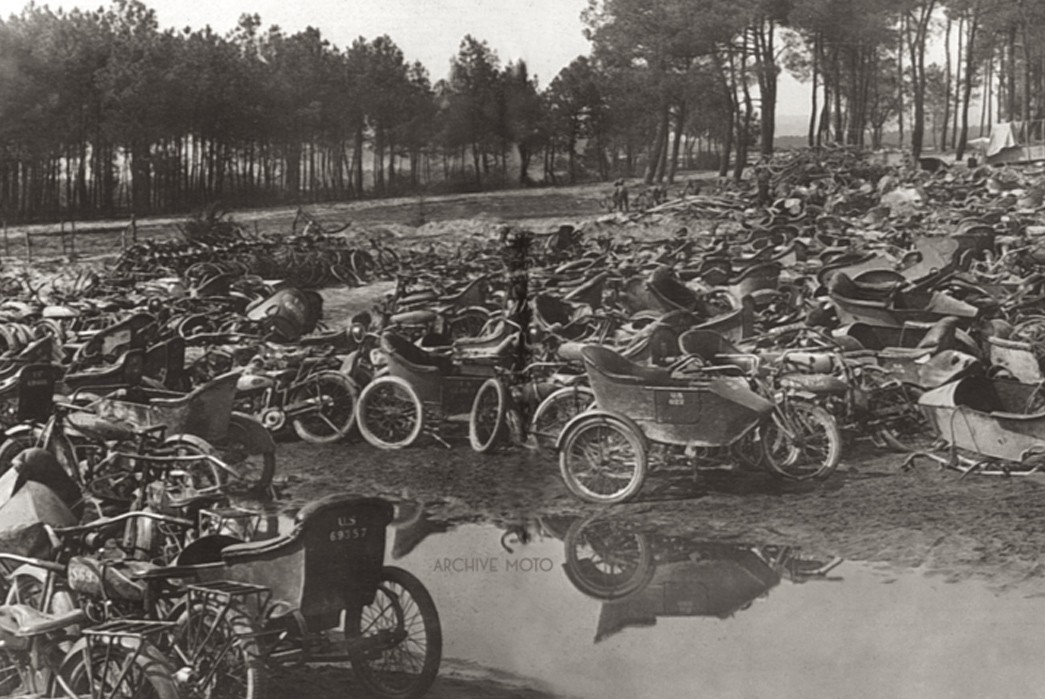
A U.S. military motorcycle boneyard near Le Mans, France around the time of the Armistice. Image via Archive Moto.
Let’s take a step back for a second. Even without all of the nuances of motorcycle subculture, riding a two-wheeled vehicle at highway speeds is not for the faint of heart. Around 5,000 motorcyclists die on modern American roads each year!
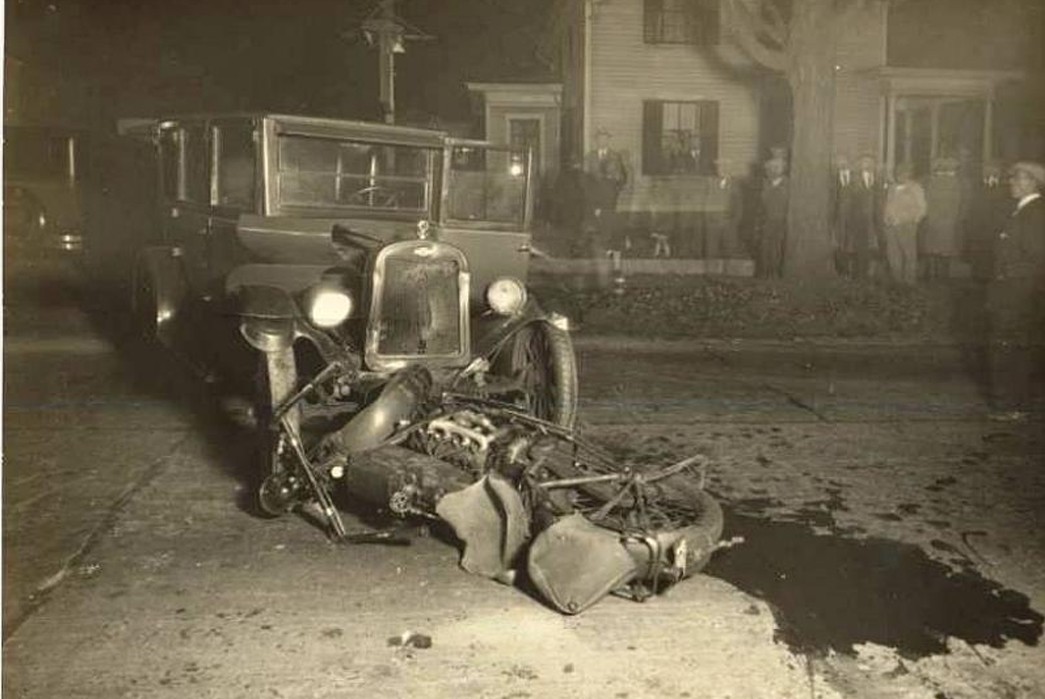
A 1920s-era collision between a Henderson motorcycle and a Chevrolet Series 490. Image via cspmail/Flickr.
Humans, in their never-ending desire to seek thrills with machinery, need to survive the experience and clothing plays a very important role in this regard. Leather is a reliable choice for breeches (jodhpurs), gloves, puttees (leggings), and jackets. Kidney belts provide extra body support for rough roads. Besides guarding against bracing winds, back strain, and potential “road rash,” leatherwear also wards off the grease, grime, and heat generated so close to the rider’s limbs.
From starting the bike to balancing, emphasis is put on the motorcyclist’s lower body. Puttees, the premium ones being leather, are secured around your lower leg and extend above shorter boots to cover calves and shins. As far as footwear goes? Lace-up tall boots could be worn in lieu of puttees and there was a booming market for tall boots during the nineteen-tens and ‘twenties as well. In short, motorcycling fashion and safety depend on good “leathers.”
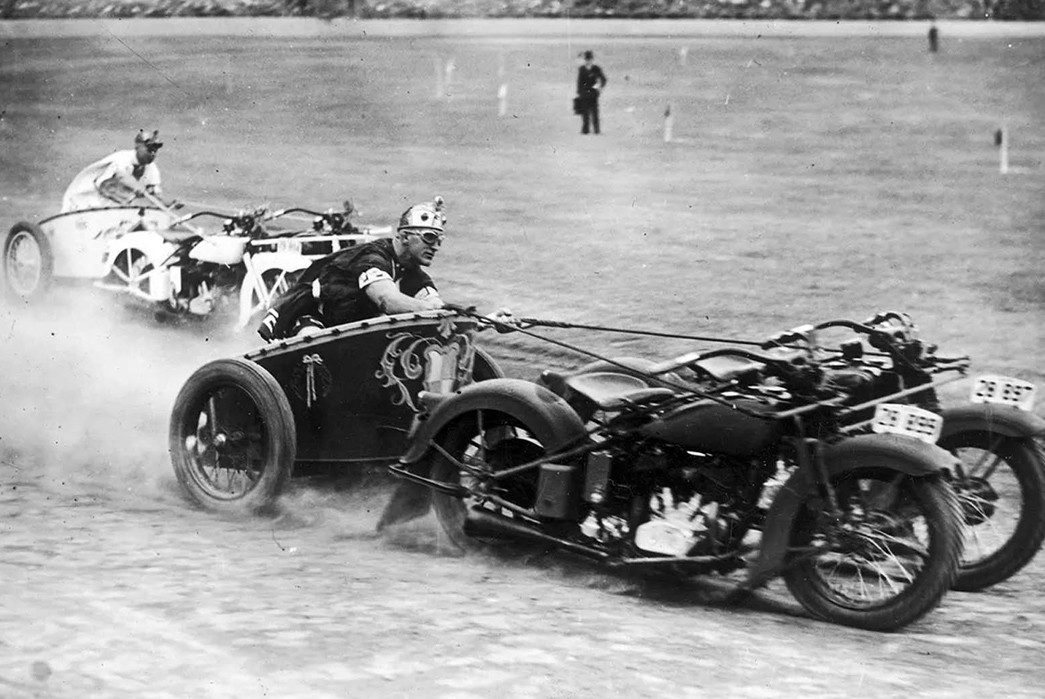
Motorcycle chariot racing was not the pinnacle of safety, but at least you could be fashionably Roman. Image via Rare Historical Photos.
Part 2 coming on 05.01.2023
Lead image Caption and Credits: A motorcycle relay team prepares to ride from Washington D.C. to San Francisco in this 1915 photo. Gauntlet gloves, knit cardigans, and jodhpurs pair well with vintage bikes. Image via Shorpy.com.

